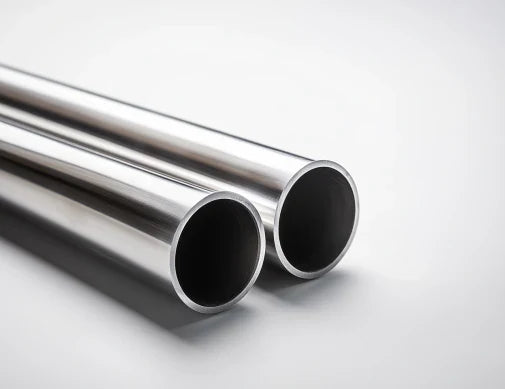
is stainless steel considered non ferrous?
Table of Contents
- Introduction
- Ferrous vs. Non-Ferrous: What's the Difference?
- Is Stainless Steel Ferrous or Non-Ferrous?
- Stainless Steel 304 vs 18/8: What's the Difference?
- Is 18/8 Stainless Steel Food Grade?
- How to Get Streaks Off of Stainless Steel
- Why Does Stainless Steel Sometimes Rust?
- Final Thoughts: Stainless Steel Is Ferrous, But Special
Introduction
When it comes to metals, things can get a little confusing. You might have heard terms like "ferrous" and "non-ferrous" and wondered where stainless steel fits in. Is it ferrous or non-ferrous? And what does that even mean? Let's break it down in plain English and also answer some common questions like stainless steel 304 vs 18/8, whether 18/8 stainless steel is food grade, and how to get streaks off of stainless steel.
Ferrous vs. Non-Ferrous: What's the Difference?
First, let's talk about what "ferrous" and "non-ferrous" mean.
Ferrous metals contain iron. The word "ferrous" comes from the Latin word "ferrum," which means iron. Examples include steel, cast iron, and wrought iron.
Non-ferrous metals do not contain iron. Common examples are aluminum, copper, brass, and titanium.
So, where does stainless steel fit in?
Is Stainless Steel Ferrous or Non-Ferrous?
Stainless steel is ferrous because it contains iron. However, it's a special kind of steel because it also has chromium (and sometimes nickel), which makes it resistant to rust and stains.
But wait—if stainless steel has iron, why doesn't it rust like regular steel?
The secret is chromium. When chromium mixes with oxygen, it forms a protective layer that stops rust from forming. That's why stainless steel stays shiny and doesn't corrode easily, even though it's technically a ferrous metal.
Stainless Steel 304 vs 18/8: What's the Difference?
You might have seen terms like stainless steel 304 and 18/8 stainless steel and wondered if they're the same thing. The short answer: Yes, they're almost the same.
18/8 stainless steel means the steel is made of 18% chromium and 8% nickel. This mix gives it great corrosion resistance and a shiny finish.
304 stainless steel is the official name for this type of steel. It's the same as 18/8 but might have tiny amounts of other metals for extra strength.
Both are commonly used in kitchen appliances, cutlery, and food containers because they're durable and don't react with food.
Is 18/8 Stainless Steel Food Grade?
Yes! 18/8 stainless steel is food grade, which means it's safe for cooking, eating, and storing food. Here's why:
- • It doesn't rust or corrode easily.
- • It doesn't leach harmful chemicals into food.
- • It's easy to clean and doesn't hold onto bacteria.
- You'll often find 18/8 stainless steel in:
- • Forks, knives, and spoons
- • Cooking pots and pans
- • Water bottles and food containers
If you're buying kitchenware, look for "18/8" or "304" to make sure it's high-quality and food-safe.
How to Get Streaks Off of Stainless Steel
Stainless steel looks great when it's clean, but it can get streaks and smudges, especially in the kitchen. Here's a simple way to get streaks off of stainless steel without damaging it:
What You'll Need:
- • Warm water
- • Dish soap
- • White vinegar or olive oil
- • A soft cloth or microfiber towel
Steps to Remove Streaks:
- 1. Wipe with Soapy Water – Mix warm water and a little dish soap. Dip a soft cloth in the mix and wipe the stainless steel surface to remove dirt and grease.
- 2. Rinse and Dry – Use a clean, damp cloth to rinse off the soap, then dry with a towel to prevent water spots.
- 3. Remove Streaks with Vinegar or Oil
- • For Fingerprints & Smudges: Dab a little olive oil on a cloth and wipe in the direction of the grain (the brushed lines on the steel). This fills in tiny scratches and makes it shine.
- • For Hard Water Streaks: Mix equal parts water and white vinegar, spray it on, then wipe with a microfiber cloth.
Pro Tip: Never use abrasive scrubbers or harsh chemicals (like bleach) on stainless steel—they can scratch or dull the surface.
Why Does Stainless Steel Sometimes Rust?
Even though stainless steel is rust-resistant, it's not completely rust-proof. Here's when it can happen:
- • Scratches or Damage: If the protective chromium layer is scratched, rust can form.
- • Exposure to Saltwater or Chemicals: Harsh environments can break down the protective layer over time.
- • Low-Quality Stainless Steel: Some cheap stainless steel has less chromium, making it more likely to rust.
If you see rust spots, you can usually scrub them off with baking soda and water.
Final Thoughts: Stainless Steel Is Ferrous, But Special
So, is stainless steel non-ferrous? No—it contains iron, so it's ferrous. But thanks to chromium, it acts like a non-ferrous metal in many ways because it doesn't rust easily.
When choosing stainless steel products:
- • For kitchenware, go with 18/8 or 304 stainless steel—they're food-safe and durable.
- • To keep it streak-free, clean with mild soap, vinegar, or olive oil.
